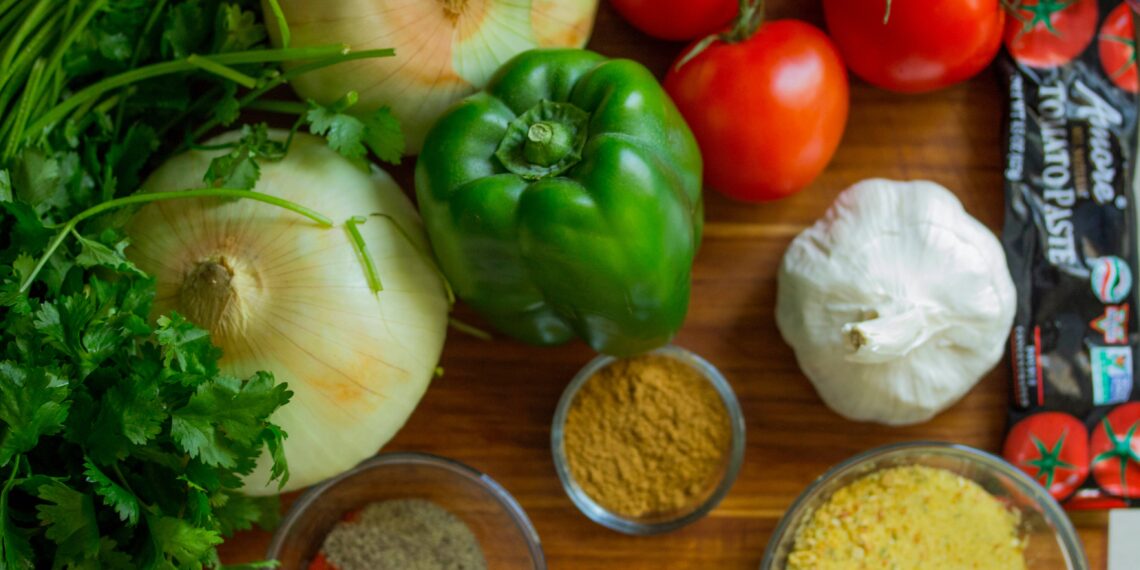Struggling to incorporate healthy foods into your diet due to a tight budget is a struggle shared by many low-income households. With the Supplemental Nutrition Assistance Program (SNAP) providing an average of $6 per person per day for food, making nutritious choices can be challenging.
This article will introduce strategies on how to maximise food stamp benefits and offer tips to eat healthily without breaking the bank. Get ready—you’re about to learn simple ways to stretch your food dollars while nourishing yourself and your family!
Key Takeaways
- Boosting food stamp benefits increases access to healthy and nutritious foods, leading to better overall health outcomes for low-income individuals and families.
- Strategies such as meal planning, smart shopping, cooking meals from scratch, and growing your own food can help maximize the value of food stamps and support affordable nutrition.
- By being strategic about shopping choices, utilizing discounts, and cooking at home, individuals can make their food stamp benefits go further while still accessing healthy and nutritious foods.
The Importance of Boosting Food Stamp Benefits for Nutrition on a Budget
Boosting food stamp benefits is crucial for individuals and families on a tight budget as it increases their access to healthy and nutritious foods, improves food security, and ultimately leads to better overall health outcomes.
Increased access to healthy and nutritious foods
Boosting food stamp benefits can help you buy more healthy foods. Fresh fruits, veggies, whole grains, and lean meats are good for your body. They give you energy and keep you from getting sick.
Having more money in food stamps makes it easier to get these healthy things, even if your budget is tight. This means a better diet for you and your family every day.
Improved food security for low-income individuals and families
Having improved food security means that low-income individuals and families have better access to the food they need. It ensures that they can afford and obtain enough nutritious food on a regular basis.
This is important because when people don’t have enough food, it can lead to health problems like malnutrition or chronic diseases. By boosting food stamp benefits, low-income households can have more money to buy groceries and make healthier choices for themselves and their families.
This helps ensure that everyone has the opportunity to eat well and stay healthy without worrying about not having enough money for food.
Better overall health outcomes
Having better overall health outcomes is an important reason to boost food stamp benefits. When low-income individuals and families have increased access to healthy and nutritious foods, it can improve their overall health.
With more affordable groceries and the ability to buy and prepare healthy foods on a budget, people can make nutrition a priority without breaking the bank. This means that they are more likely to eat nutritious meals, which can contribute to better physical health.
Additionally, SNAP-Ed programs funded through SNAP can provide valuable nutrition education that empowers recipients to make healthier choices for themselves and their families. By maximizing food stamp benefits and prioritizing healthy eating, low-income individuals can enhance their well-being and enjoy better overall health outcomes.
A Guide to Government Food Assistance Programs<—-
Potential Policy Implications of Boosting Food Stamp Benefits
Boosting food stamp benefits can have several potential policy implications, including the increased spending on groceries by low-income individuals and families, enhanced nutritional quality of their food purchases, and the stimulation of local economies.
Increased spending on groceries
Boosting food stamp benefits can lead to increased spending on groceries, which is crucial for low-income individuals and families. With higher benefit amounts, people can afford to buy more nutritious foods that support their overall health.
This means having access to fresh fruits and vegetables, lean proteins, whole grains, and other essential items for a balanced diet. By increasing spending on groceries, we can ensure that everyone has the opportunity to make healthier food choices and improve their well-being.
Enhanced nutritional quality of food purchases
Boosting food stamp benefits can lead to enhanced nutritional quality of food purchases for low-income individuals and families. With increased spending on groceries, it becomes easier to afford healthier and more nutritious foods.
This means that people can prioritize fresh fruits and vegetables, lean proteins, whole grains, and other essential ingredients for a balanced diet. By having access to a wider range of healthy options, individuals can make better choices when it comes to their meals, ultimately improving their overall health outcomes.
Additionally, the ability to purchase higher-quality foods with food stamps helps promote affordable nutrition and encourages healthy eating on a budget.
Stimulating local economies
Boosting food stamp benefits can have a positive effect on local economies. When low-income individuals and families receive increased assistance, they are able to spend more money on groceries.
This means that local businesses, such as grocery stores and farmers’ markets, benefit from higher sales. Not only does this support the local economy, but it also creates jobs and opportunities for growth within the community.
By stimulating local economies, boosting food stamp benefits has a ripple effect that helps everyone in the area thrive.
Strategies for Maximizing Food Stamp Benefits

Learn how to stretch your food budget and buy and prepare healthy foods on a budget. From meal planning and smart shopping to cooking from scratch and growing your own food, discover practical strategies for making the most of your food stamp benefits.
Don’t miss out on these tips that can help you eat nutritious meals without breaking the bank. Read more now!
Meal planning and budgeting
One important strategy for maximizing food stamp benefits is meal planning and budgeting. By carefully planning your meals in advance, you can make the most of your food stamps and stretch your food budget.
Start by creating a weekly menu based on affordable and nutritious ingredients. Look for sales or discounts at grocery stores to help save money. Another tip is to buy ingredients that can be used in multiple recipes, so you can minimize waste and make your groceries last longer.
Additionally, cooking meals from scratch instead of buying pre-packaged foods can also help you save money. Lastly, consider growing some of your own food if possible, such as herbs or vegetables, which can further reduce costs.
Smart shopping and utilizing discounts
To make the most of your food stamp benefits and stretch your budget, smart shopping and utilizing discounts can be really helpful. Look for sales, coupons, and special deals at grocery stores to get the best prices on nutritious foods.
Take advantage of loyalty programs that offer additional savings or rewards. Buying in bulk can also save money in the long run, especially for non-perishable items like rice, beans, or pasta.
Consider purchasing store-brand products instead of name brands as they are often cheaper but still provide the same quality. Planning your meals ahead of time and making a shopping list can help you stay focused and avoid impulse purchases.
Stick to the perimeter of the store where fresh produce, meat, and dairy products are usually located as they tend to be healthier options compared to processed foods found in the aisles.
Take advantage of local farmers’ markets or community-supported agriculture programs that may have lower prices on fresh fruits and vegetables. In addition, some organizations or nonprofits offer free or discounted groceries for individuals with limited incomes.
Don’t forget to compare prices at different stores before making your purchase to ensure you’re getting the best deal possible.
Cooking meals from scratch
Cooking meals from scratch can be a great way to stretch your food budget and eat healthier. When you cook at home, you have control over the ingredients you use and can make nutritious choices that fit within your budget.
Additionally, cooking from scratch allows you to avoid processed foods which are often more expensive and less healthy. By preparing meals yourself, you can save money by buying ingredients in bulk, taking advantage of sales, and using leftovers creatively.
Remember, cooking at home doesn’t have to be complicated – there are plenty of delicious and simple recipes available online that require just a few basic ingredients. So put on an apron and get cooking!
Growing your own food
Growing your own food is a great way to stretch your food budget and have fresh, nutritious produce. Even if you have limited space, like a small balcony or yard, you can still grow vegetables and herbs in containers.
It’s an affordable and rewarding way to have access to healthy foods without spending a lot of money. Plus, gardening can be a fun and relaxing activity that gets you outside and moving.
By growing your own food, you can supplement your food stamp benefits with homegrown fruits and vegetables, ensuring that you have even more options for nutritious meals on a tight budget.
Navigating Government Food Support Programs: A Guide for Families<—-
Conclusion
In conclusion, boosting food stamp benefits is crucial for low-income individuals and families to achieve nutrition on a budget. By increasing access to healthy foods, improving food security, and promoting better overall health outcomes, these benefits can make a significant difference.
Strategies such as meal planning, smart shopping, cooking meals from scratch, and growing your own food can help maximize the value of food stamps and support affordable nutrition.
It’s important that we prioritize the well-being of low-income households by ensuring they have the resources needed for healthy eating on a limited budget.
FAQs
1. How can I boost my food stamp benefits for better nutrition on a budget?
You can boost your food stamp benefits by applying for all eligible programs, using coupons and discounts, planning meals ahead of time, and shopping for affordable nutritious foods.
2. Can I buy any type of food with food stamps?
Food stamps can be used to purchase a variety of foods including fruits, vegetables, meat, dairy products, bread, and canned goods. However, they cannot be used to buy non-food items like alcohol or tobacco.
3. What if my food stamp benefits are not enough to cover all my grocery expenses?
If your food stamp benefits do not cover all of your grocery expenses, you can look into local assistance programs such as community gardens or food pantries that provide free or low-cost fresh produce and other essential items.
4. Are there any resources available to help me plan healthy meals on a limited budget?
Yes! There are various online resources and apps available that provide meal planning ideas and tips for cooking nutritious meals on a limited budget. Additionally, local community centers may offer cooking classes or workshops focused on budget-friendly meal preparation.
Source URLs
https://www.cbpp.org/research/food-assistance/the-supplemental-nutrition-assistance-program-snap
https://www.fns.usda.gov/snap/thriftyfoodplan
https://www.ncbi.nlm.nih.gov/pmc/articles/PMC2920974/
https://www.cnn.com/2023/03/01/politics/food-stamps-pandemic-emergency-allotments/index.html
https://www.ncdhhs.gov/divisions/child-and-family-well-being/food-and-nutrition-services-food-stamps








